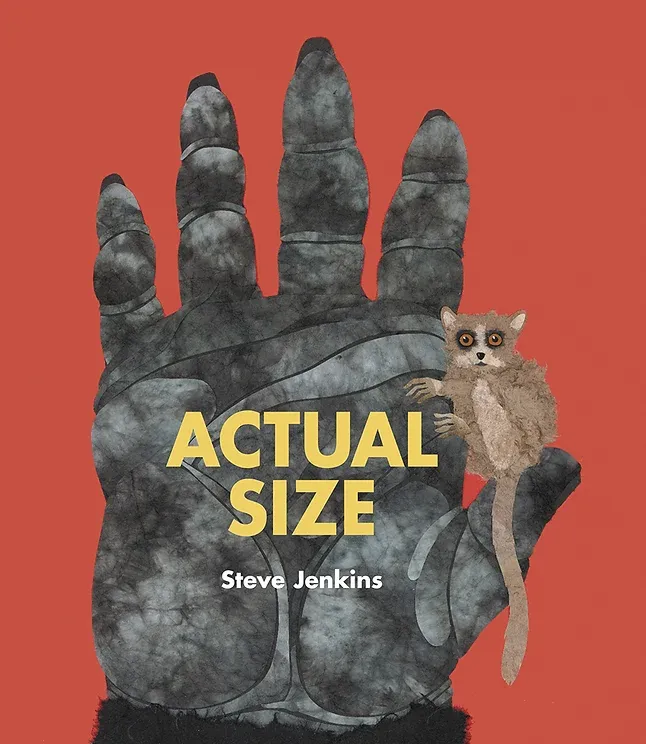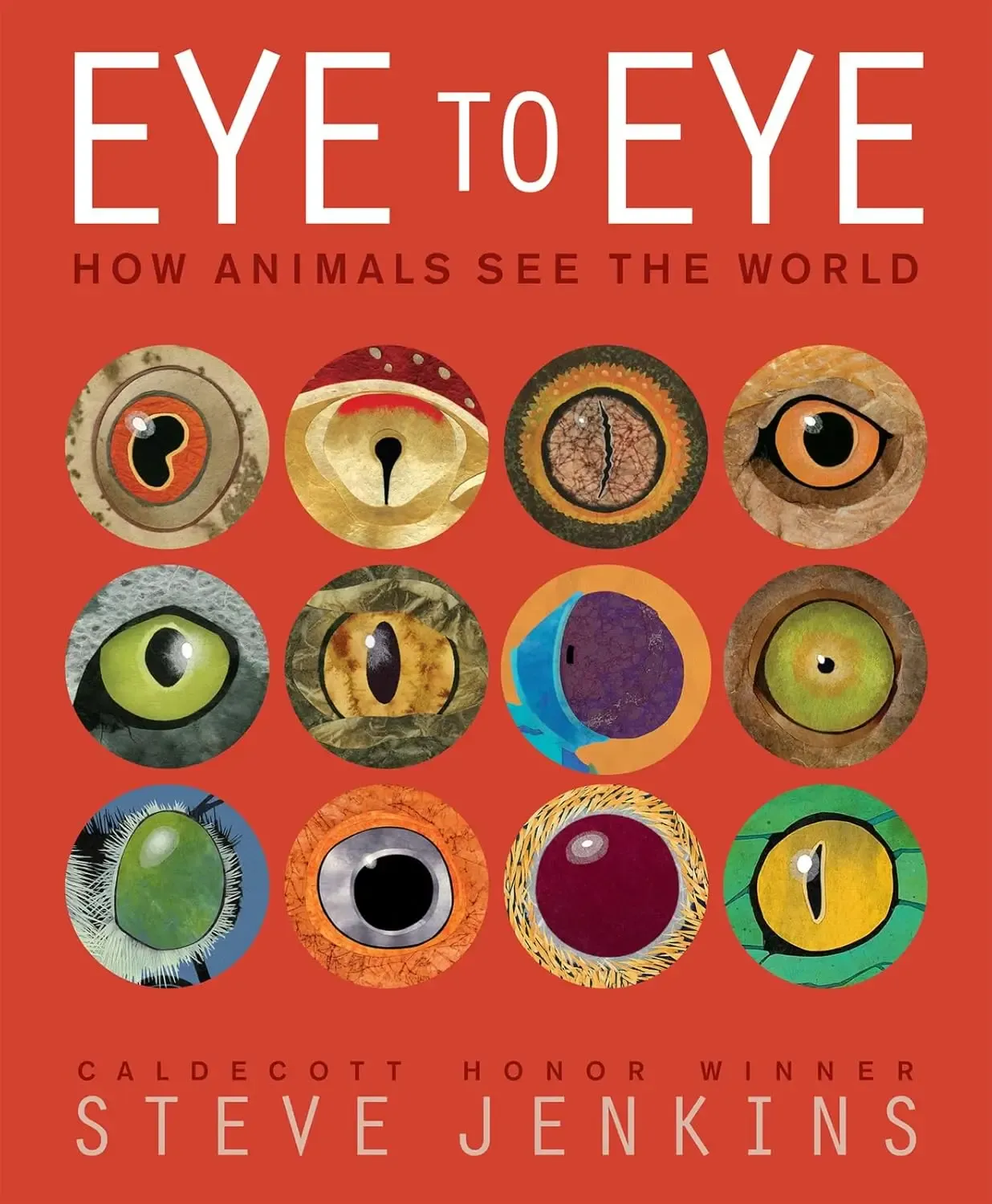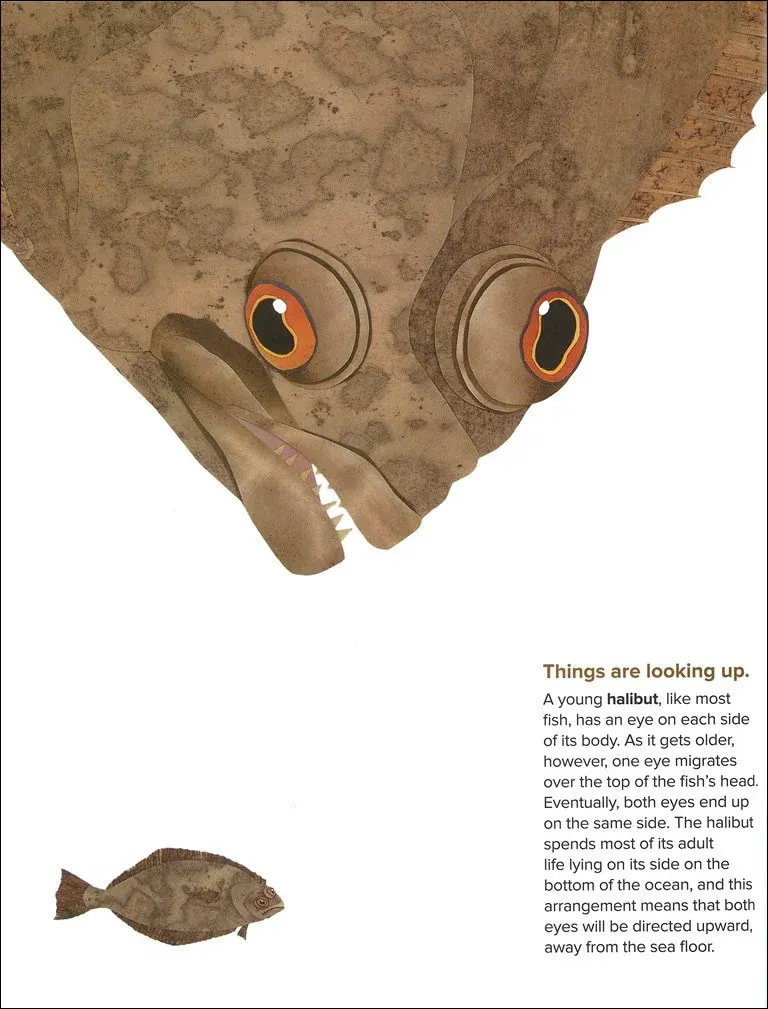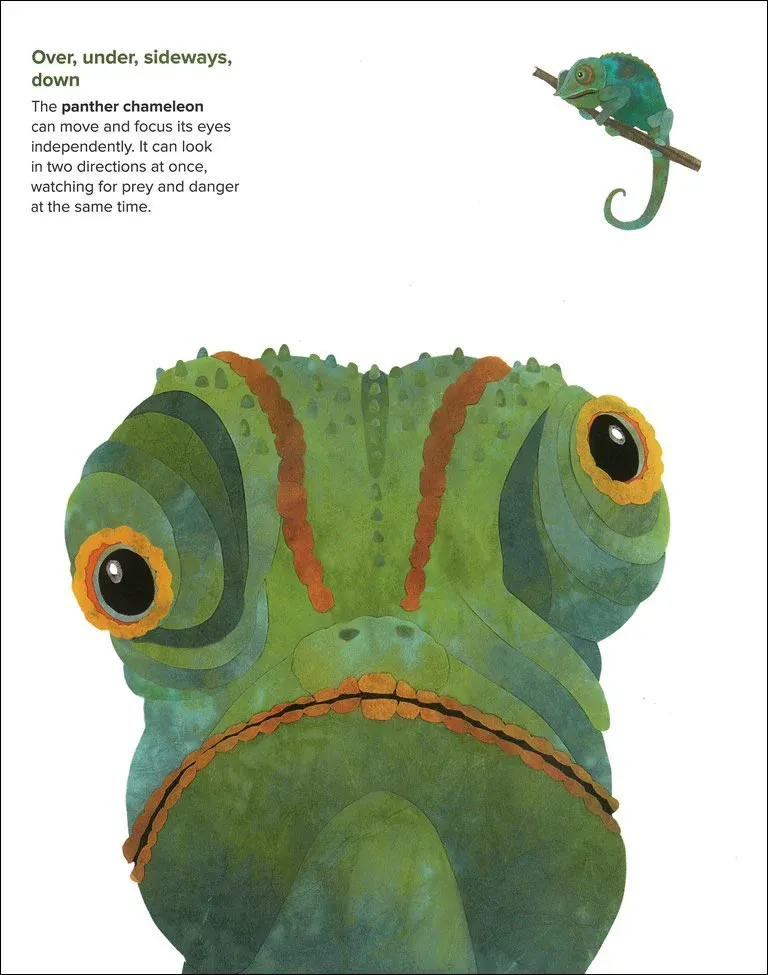Eye to Eye: How Animals See The World by Steve Jenkins is a fascinating and visually stunning exploration of how different animals perceive the world around them. Through Jenkins’ characteristic cut-paper collage illustrations and engaging, informative text, readers are introduced to the incredible variety of ways animals have adapted their vision to survive and thrive in their environments. From simple eyes that detect only light and dark to complex, multifaceted compound eyes, this book takes us on a journey into the many different “views” of the animal kingdom.
The book is organized around four main types of eyes that exist in the animal world: eyespots, pinhole eyes, compound eyes, and camera eyes. Jenkins introduces readers to a wide range of animals, from the tiniest invertebrates to large mammals, explaining how their eyes work and why their particular type of vision is perfectly suited to their needs. Each animal’s section is paired with Jenkins’ stunning illustrations, rendered in his signature cut-paper style, which bring the animals to life in vivid detail. Readers will marvel at the beautifully textured eyes of creatures like the dragonfly, which has nearly 30,000 lenses in each eye, or the squid, whose pinhole eyes allow it to see in the dark depths of the ocean.
What makes Eye to Eye: How Animals See The World particularly engaging is the balance Jenkins strikes between scientific detail and readability. While the book is packed with fascinating facts, like how a mantis shrimp can see polarized light and ultraviolet rays, it never feels overwhelming or too technical. Instead, Jenkins presents the information in a way that is accessible to young readers, while still offering enough depth to engage older readers or even adults. Each page provides a window into the animal’s world, explaining not only how their eyes function, but why their vision is perfectly adapted to their particular environment. This ability to link biology with behavior and survival is one of the book’s greatest strengths.
The illustrations, as always with Jenkins, are nothing short of stunning. His cut-paper collages capture both the beauty and diversity of the animal kingdom, with a focus on the eyes that is mesmerizing. The careful attention to texture and color makes each eye seem almost real, and Jenkins’ detailed, precise work helps readers understand just how unique each creature’s vision truly is. Whether it’s the delicate, glassy eyes of a jumping spider or the massive, wide-set eyes of a chameleon, Jenkins’ art makes the science behind each animal’s vision feel immediate and compelling.
One of the standout features of the book is how it encourages curiosity and further exploration. Jenkins doesn’t just give facts, he sparks a sense of wonder about the natural world. After learning about how bees use their compound eyes to detect movement and navigate, or how eagles can see four times better than humans, readers are left with a sense of awe at the diversity of life and the ingenious ways animals have evolved to meet their challenges. The book also offers a helpful visual glossary of each animal featured, providing a little more context for those readers who want to dive deeper into the subject.
Eye to Eye: How Animals See The World is also a subtle reminder of the importance of adaptation in the natural world. Each animal’s eyes are perfectly suited for its environment, whether it’s a tiny water flea that relies on simple eyespots or a sophisticated predator like an owl that needs its binocular vision to hunt. Jenkins highlights how these adaptations are not only fascinating but also vital to the survival of each species. This undercurrent of evolution and natural selection makes the book a perfect complement to classroom discussions on biology or animal behavior.
Eye to Eye: How Animals See The World is a brilliant introduction to the science of vision in the animal kingdom, blending art, biology, and storytelling in a way that captivates readers of all ages. Steve Jenkins’ breathtaking illustrations and clear, engaging text make complex scientific concepts easy to understand and incredibly fun to learn about. Whether you’re a young animal enthusiast or simply someone who loves beautifully crafted books, Eye to Eye: How Animals See The World is sure to leave you with a deeper appreciation for the incredible diversity of life, and the many ways animals see the world.
Questions to ask while reading:
- Which animal's eyes surprised you the most, and why?
- How do the different types of eyes help each animal survive in its environment?
- What are some ways in which human vision is similar to or different from the animals featured in the book?
More books by Steve Jenkins:
 Actual Size
Actual Size




